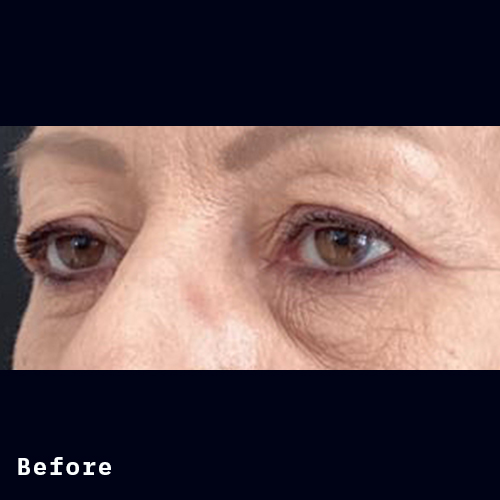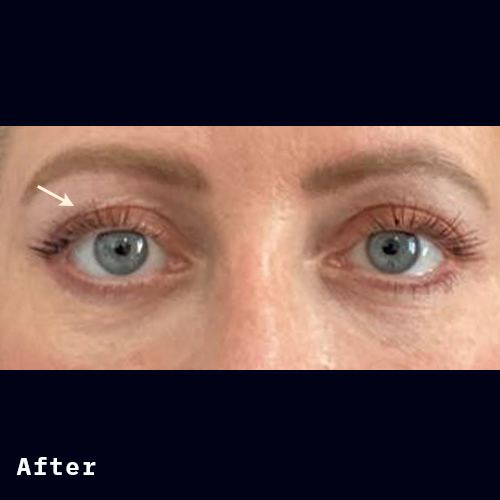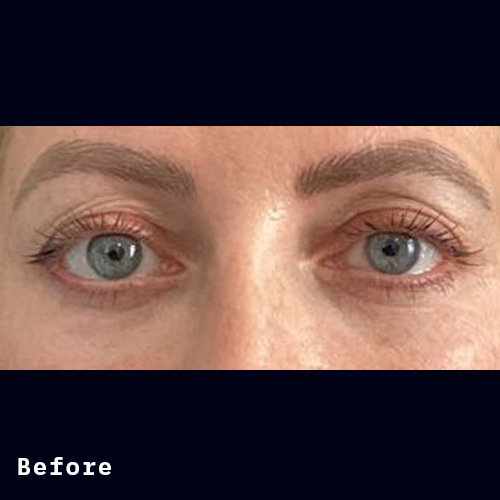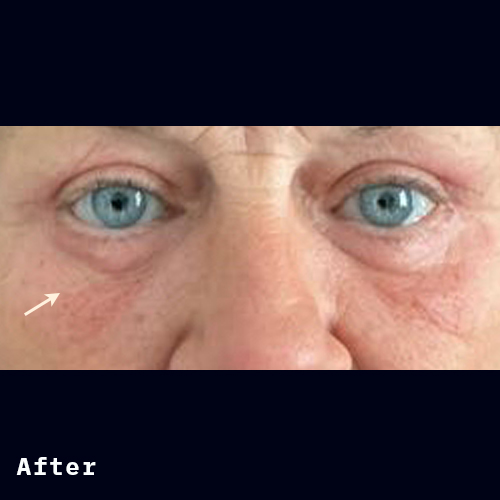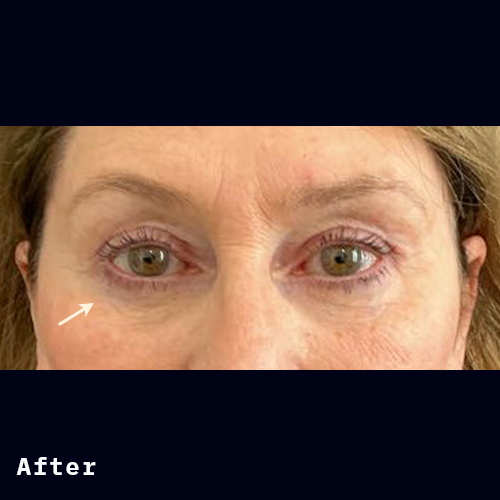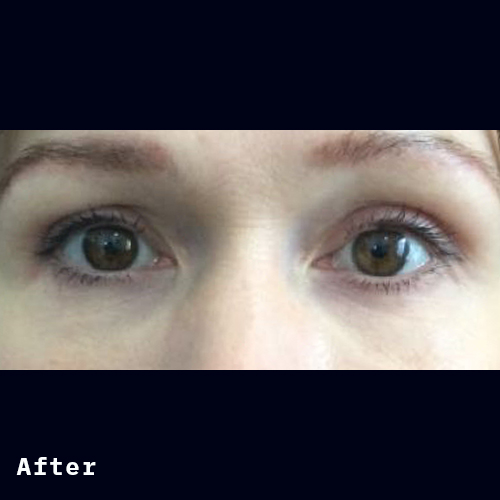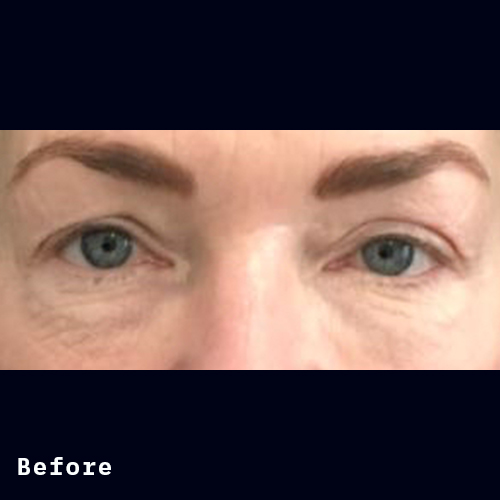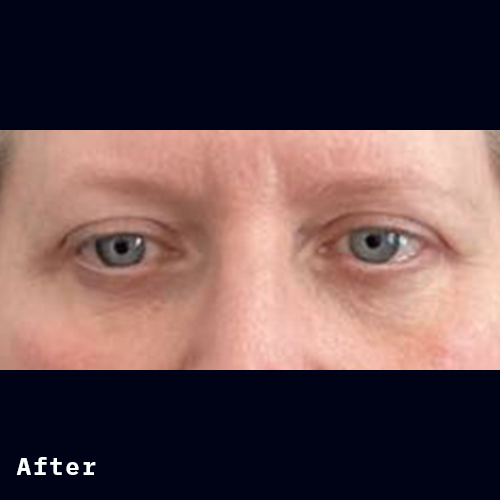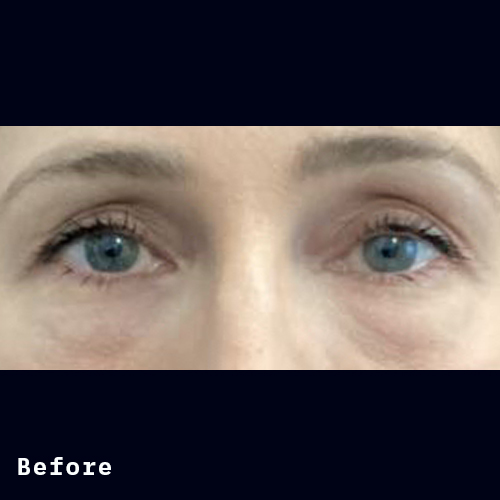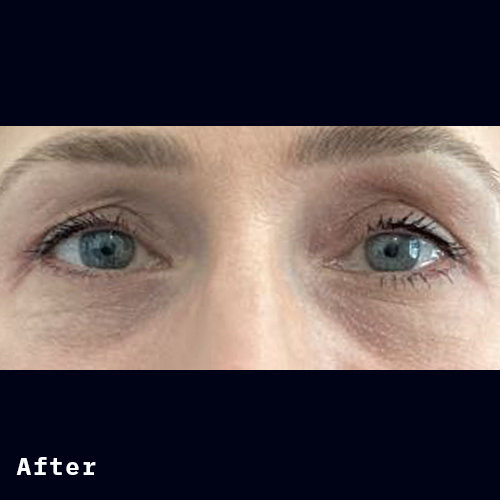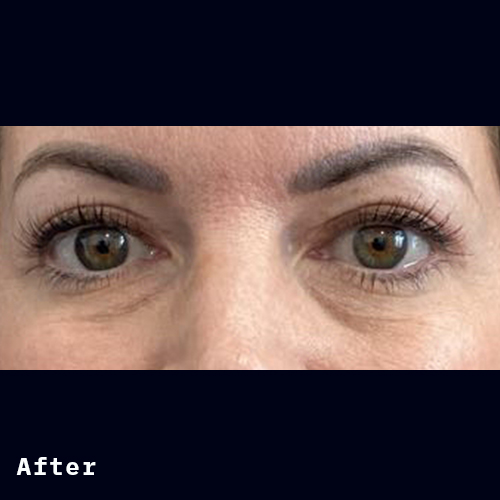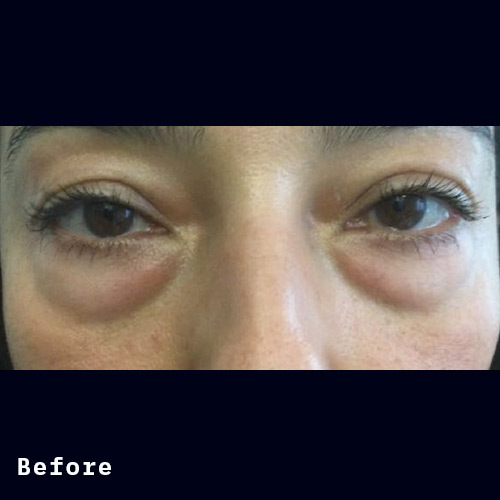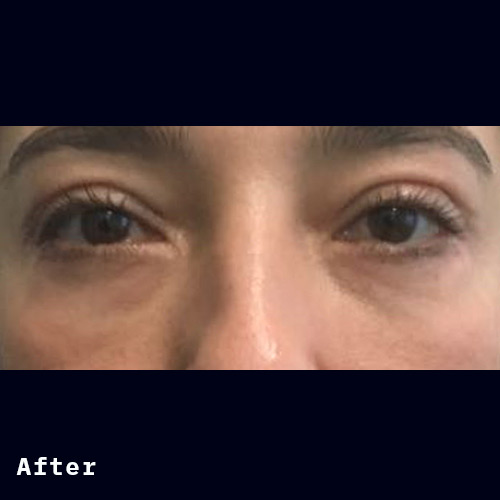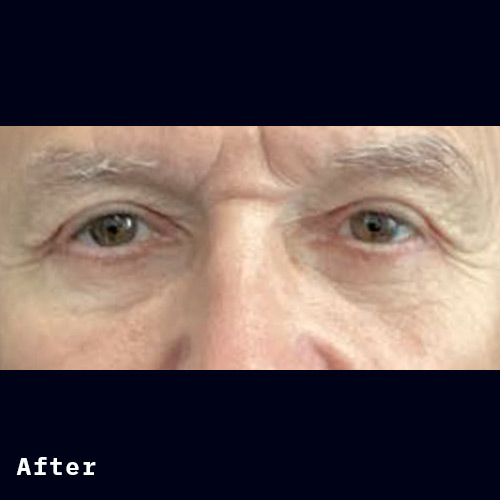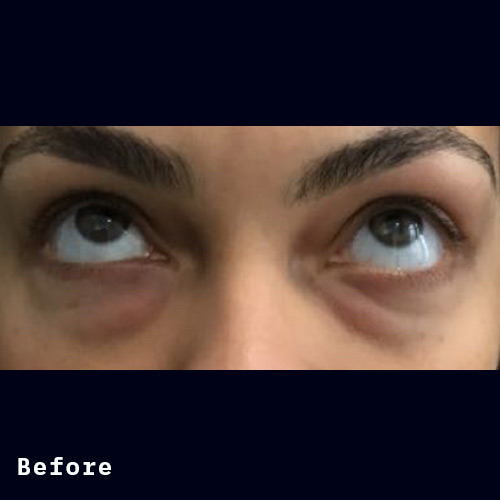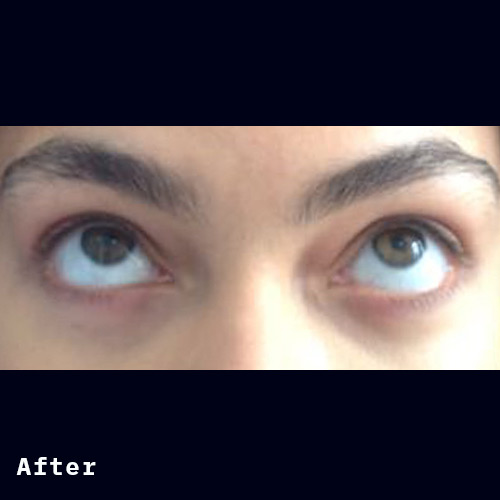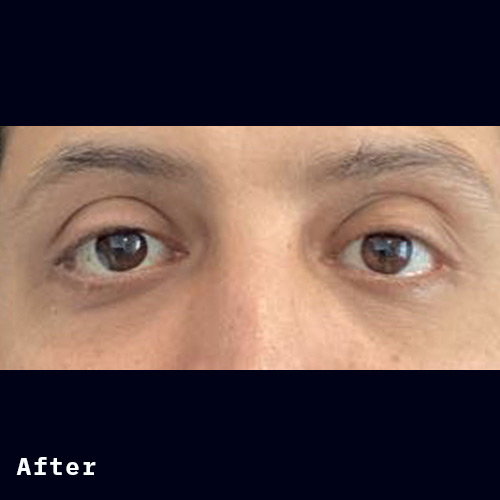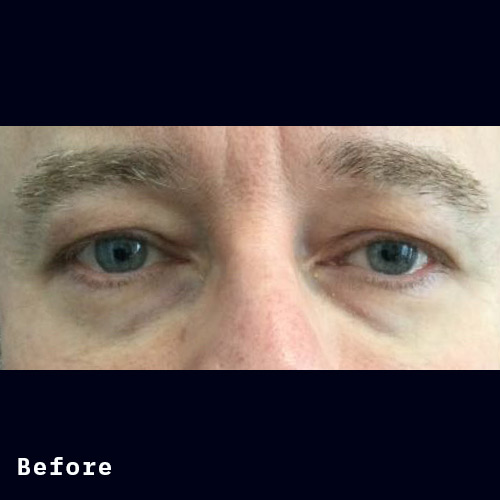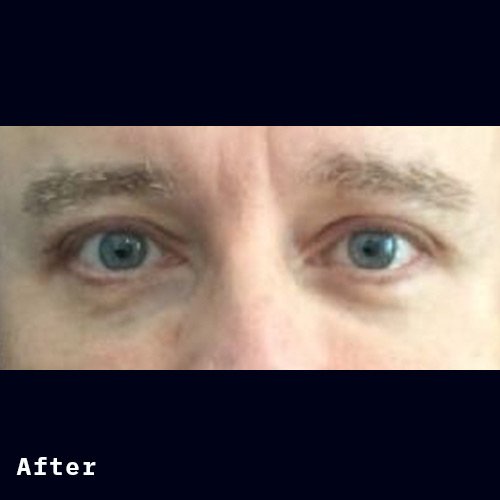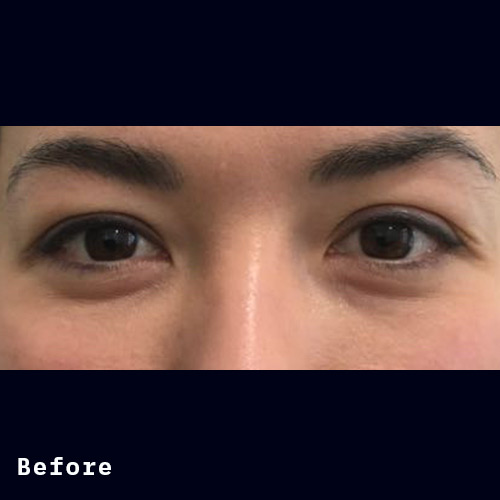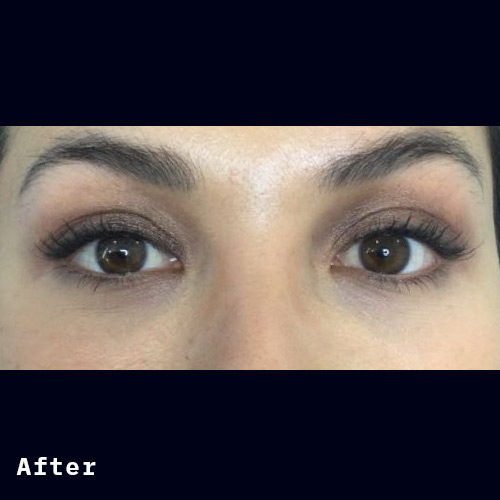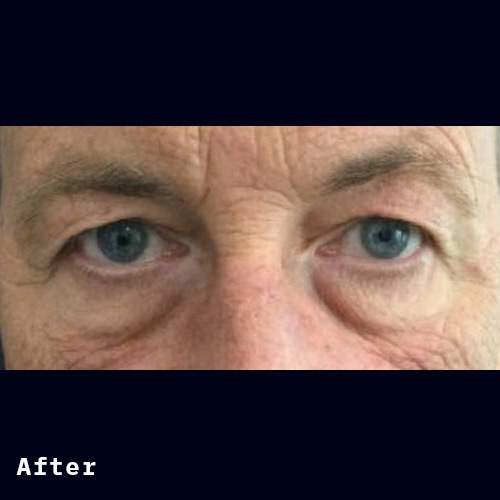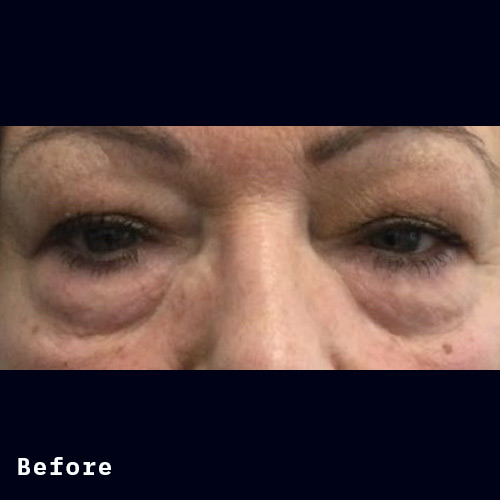oculoplastic Services
Blepharoplasty
Blepharoplasty (Eyelid Surgery), involves the removal of excess skin and fat from the eyelids to improve appearance, reduce under-eye bags and create a more youthful look.
Rated 5/5
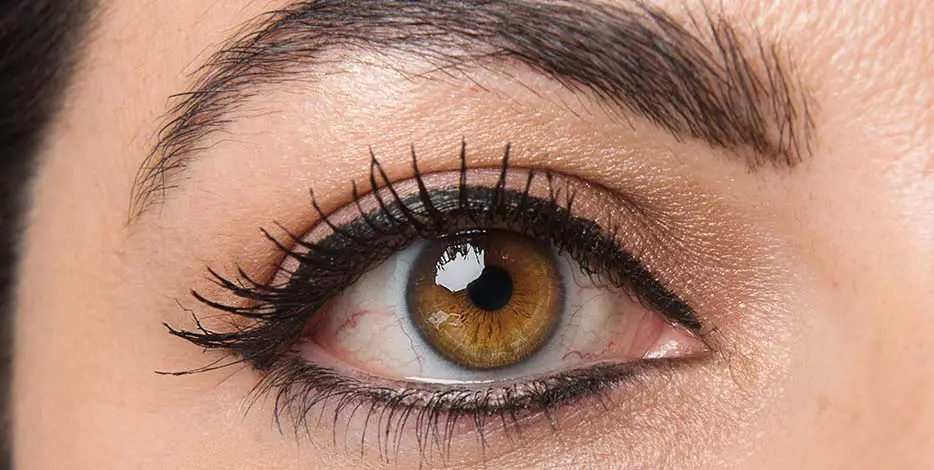
Blepharoplasty (Eyelid Surgery) is a surgical procedure performed to improve the cosmetic appearance of the eyelids. It is also known as eyelid reduction or eyelid surgery.
Blepharoplasty improves hooded or drooping eyelids or eye bags by removing excess fat or skin. The aim is to reduce the signs of ageing around the eyes and create a more youthful, refreshed appearance.
Blepharoplasty is one of the most common functional and cosmetic procedures performed in facial plastic surgery. The recovery time is short, and the procedure is low risk. An eyelid lift can be performed on the upper, lower, or both eyelids.
How long do results last?
Blepharoplasty is a long-term procedure that produces excellent, natural-looking results. It can give you a younger appearance by improving the cosmetic appearance of your eyelids. The full effect, however, does not last forever. The natural ageing process will continue.
While results vary from patient to patient, most people are satisfied with their blepharoplasty results for 10-15 years.
Most patients don’t have a second procedure because they’re so satisfied with the results of the first one.
Who is suitable for eyelid surgery?
Blepharoplasty is suitable for both men and women. It’s usually patients over the age of 40 who notice signs of excess skin or prominent lower eye bags. However, some patients in their 20s or 30s have a genetic predisposition for excess skin or lower eyelid bags and can benefit from eyelid surgery.
Suitable candidates for blepharoplasty are/possess:
- Bothered by signs of ageing in the eye area
- Excessive drooping of the eyelids
- Eyelid puffiness
- Wrinkled skin of the eyelid
- Presence of dark circles under the eyes
- Realistic expectations
- Tired appearance of the eyes
Miss Hawkes will determine your suitability for a blepharoplasty during your pre-operative consultation.
Why should I choose Miss Hawkes for blepharoplasty?
Miss Elizabeth Hawkes is a consultant ophthalmic surgeon, oculoplastic surgeon and experienced cosmetic doctor. Natural enhancement of the face and eye is paramount to Miss Hawkes. She boasts an extensive knowledge of the delicate eye area, forehead and face. Miss Hawkes provides treatments in a safe, medical environment at the award-winning private London clinic, the Cadogan Clinic.
Visit her YouTube channel to see Miss Elizabeth Hawkes perform Upper Eyelid Blepharoplasty Surgery.
Treatment areas Which areas can be treated?
Upper eyelids:Removes excess or drooping skin and fat, resulting in a more youthful appearance and enhanced vision.
Lower eyelids:Improves the appearance of dark circles, hollow under-eye regions, and eye bags. This may include repositioning existing fat to create a more youthful look under the eyes.
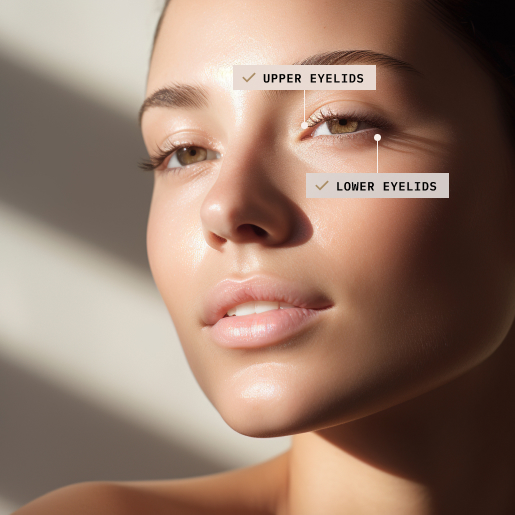
Trusted Practitioner
Highly experienced and serving in multiple advisory roles, Dr Hawkes stays at the forefront of industry standards and care.
Award-Winning
Award-winning and Tatter-recommended, Dr Hawkes is honoured to be commended for her achievements.
Bespoke Treatment
Using extensive facial and ocular expertise, Dr Hawkes tailors each treatment to the individual needs and natural features.
Advanced Techniques
State-of-the-art technologies and meticulous care underscore Dr Hawkes’ dedication to continuous innovation, learning and excellent results.
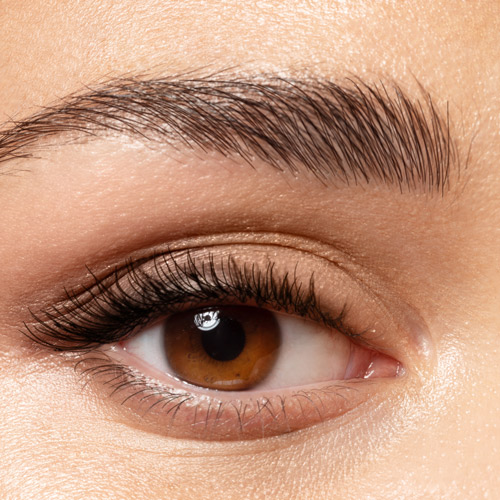
Concerns Treated
Which concerns can be addressed?
Droopy eyelids:Lifts and tightens the upper eyelids, restoring a more youthful, alert appearance.
Eye bags:Removes or repositions excess fat under the eyes to reduce puffiness and create a smoother contour.
Excess eyelid skin:Removes surplus skin on the eyelids to improve appearance and comfort.
Excess skin around the eyes:Reduces loose skin surrounding the eyes for a more refreshed and open look.
Visual impairment due to excess skin:Lifts sagging upper eyelid skin that may obstruct vision, improving the field of sight.
Hooded eyes:Removes excess upper eyelid skin to reduce the hooded effect, giving a more defined crease and brighter look.
Why choose Dr Hawkes?
Bespoke care,
natural results.
Bespoke Treatment: Dr. Hawkes meticulously formulates a personalised treatment plan specifically tailored to your individual needs, medical background, and aspirations.
Excellence in Treatment:With over 20 years of medical and surgical training, Dr Hawkes offers expertise in eye surgery, eye care and aesthetic treatments.
Top-tier Facility: Dr Hawkes is the lead Oculoplastic Surgeon at the internationally renowned Cadogan Clinic in Chelsea, London, where your safety and comfort are paramount.
Rated 5/5
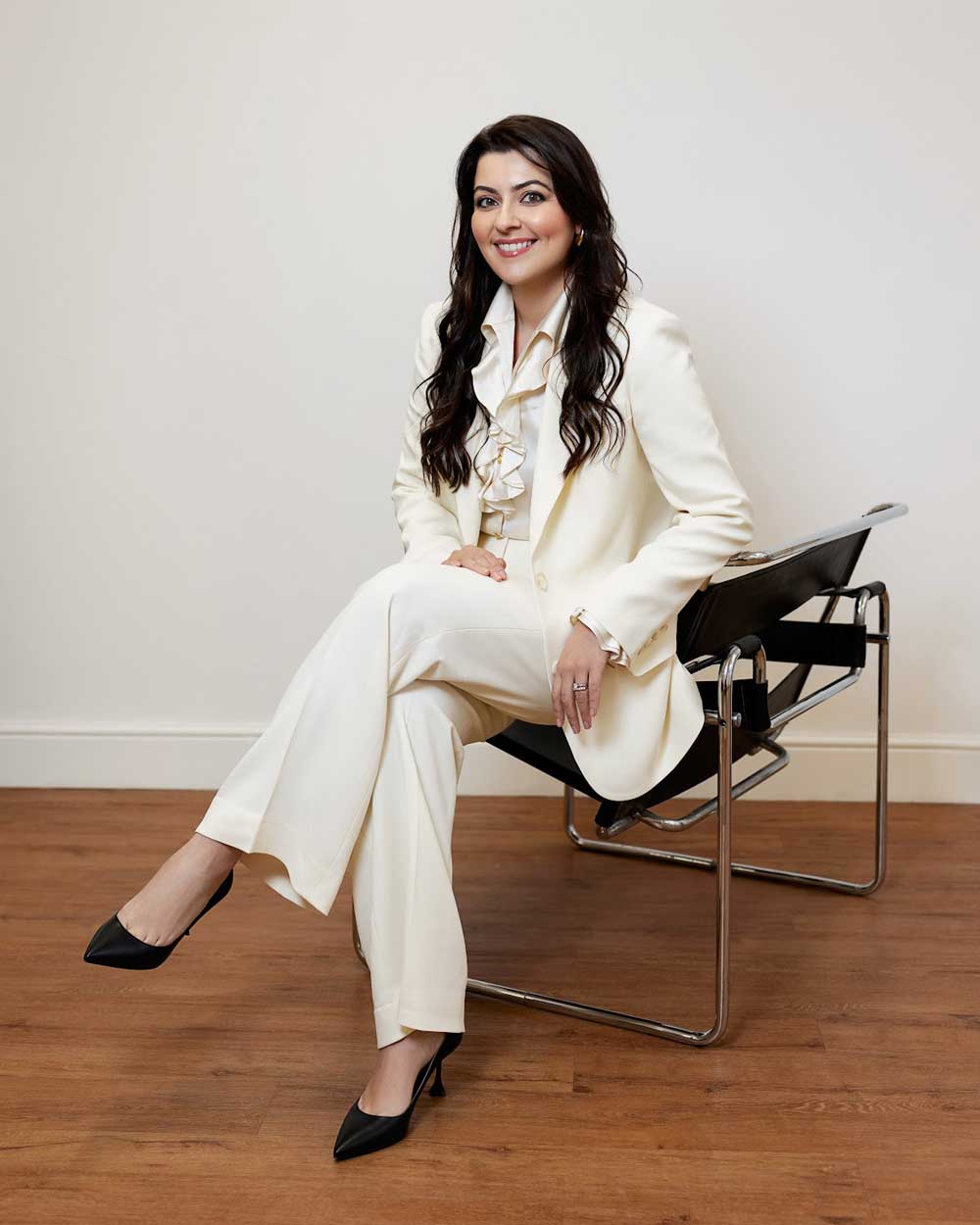
TESTIMONIALS
Happy patients
Patient Safety Guide
Patient safety is Dr Hawkes’ top priority. She upholds the highest safety standards at every stage to ensure the best possible care.
Pre-Treatment:
- Consultation: Dr Hawkes begins with a thorough consultation to assess your medical history, expectations, and concerns.
- Health Assessment: A health evaluation is conducted to ensure you are a suitable candidate for blepharoplasty.
During Treatment
- Qualified Surgeon: Your procedure is performed by Dr Hawkes, a certified and experienced surgeon specialising in blepharoplasty.
- Hygiene & Sterilisation: Dr Hawkes ensures a sterile environment and uses meticulous procedures to reduce any risk of infection.
- Technique: Advanced surgical techniques are employed to achieve optimal results while minimising trauma to delicate eye tissues.
Post-Treatment
- Post-Procedure Care Instructions: Post-procedure guidelines are provided to ensure optimal healing and minimise potential complications.
- Emergency Protocols: Emergency protocols are in place to manage severe allergic reactions or complications.


Dr Hawkes serves as a Clinical Advisor for the Complications in Medical Aesthetics Collaborative and Aesthetics Journal.
Dr Hawkes' Results
Before & Afters
Frequently Asked Questions
Dr Hawkes is available to address your inquiries. Should you have questions, we kindly invite you to reach out.
ContactAt what age should I consider blepharoplasty?
Eyelid surgery is usually performed on people over 40 when the signs of ageing have manifested. However, many people in their 30s opt for blepharoplasty with valid reasons, such as pronounced bags under the eyes or excess upper eyelid skin.At what age should I consider blepharoplasty?
Can fine lines and wrinkles be treated with a blepharoplasty?
The skin around the eyes is very delicate and can show signs of ageing easily. Many patients want to know if eyelid surgery can help them get rid of wrinkles around their eyes.Can fine lines and wrinkles be treated with a blepharoplasty?
The skin under the eyes appears smoother and firmer after blepharoplasty because excess tissue is removed and muscles are tightened. The procedure removes wrinkles caused by sagging skin or under-eye bags, but it does not treat other common eye wrinkles.
Blepharoplasty (Eyelid Surgery) can be performed alone to treat eye wrinkles, but Miss Hawkes can also combine it with other procedures. Depending on the type and intensity of the eye wrinkles to be treated, Miss Hawkes may recommend one of the following treatments:
- Anti-wrinkle injections
- Dermal fillers
- Eyebrow or forehead lift
Can I combine blepharoplasty with dermal fillers?
Besides blepharoplasty, Miss Hawkes will sometimes offer non-surgical cosmetic solutions such as tear trough fillers, temple fillers and mid-face enhancements, as the lower eyelids are part of the mid-face.Can I combine blepharoplasty with dermal fillers?
Does Miss Hawkes perform revision surgery?
Yes, Miss Hawkes is frequently consulted for second or even third opinions after surgery has been performed elsewhere. Revision blepharoplasty surgery is complex and is best managed by a dedicated oculoplastic surgeon.Does Miss Hawkes perform revision surgery?
How do the eyes age?
Ageing around the eyes can be caused by a number of factors. First, the skin sags as a result of the loss of elastin (an essential protein for skin elasticity). This results in dermatochalasis, or excess skin. Second, the underlying major eyelid muscle (orbicularis oculi), which encircles the eye, becomes weak and bulky, which also contributes to eyelid heaviness.How do the eyes age?
Another sign of ageing is the presence of eye bags. This is due to the forward prolapse of orbital fat, which cannot be held back by the weakening orbital septum over time. In severe cases, excess overhanging skin can obscure a patient’s field of vision.
Eyelid surgery is performed to improve the eyelids by remodelling their structure. This can involve complex combinations of skin removal, muscle tightening, and fat repositioning or removal. Because each eyelid is unique, Miss Hawkes tailors each individual’s surgical plan and procedure.
How is blepharoplasty performed?
The way the surgery is performed varies, but all forms of blepharoplasty require a surgeon experienced in oculoplastics. The operation takes 45 mins-2 hours (depending on the number of eyelids requiring surgery) and can be performed under local anaesthetic, general anaesthetic, or sedation.How is blepharoplasty performed?
How long do blepharoplasty results last?
Blepharoplasty is a long-term procedure that produces excellent, natural-looking results. It can give you a younger appearance by improving the cosmetic appearance of your eyelids. The full effect, however, does not last forever. The natural ageing process will continue.How long do blepharoplasty results last?
While results vary from patient to patient, most people are happy with their blepharoplasty results for 10-15 years.
Most patients don’t have a second procedure because they’re content with the first one.
How long do I have to stay in the hospital?
Eyelid surgery is performed in a day case setting with no overnight stay; therefore, you will be discharged after a short time in recovery and an observation period.How long do I have to stay in the hospital?
How long does eyelid surgery take?
The procedure takes between 45 minutes and 2 hours, depending on the complexity and number of eyelids requiring surgery. Miss Hawkes performs blepharoplasty in a dedicated day case surgical centre.How long does eyelid surgery take?
How long will I be off work?
Typically, upper blepharoplasty patients can return to work after 7-10 days.How long will I be off work?
For lower blepharoplasty, the recovery time is longer, at 10-14 days. You should take 2 weeks off work as the lower eyelids recover more slowly due to prolonged swelling.
However, all patients are different, with some returning to work earlier, and others needing more time off for their recovery.
How much does blepharoplasty cost?
The cost of upper and lower eyelid blepharoplasty varies. However, for most patients, the typical price for an upper eyelid blepharoplasty procedure with Miss Elizabeth Hawkes is £7350, and for a lower eyelid blepharoplasty is £8350.How much does blepharoplasty cost?
How should I prepare for blepharoplasty treatment?
Miss Hawkes will provide all pre-operative advice during your consultation.How should I prepare for blepharoplasty treatment?
1. Stop smoking. Smoking reduces the blood supply to the skin and can slow healing. Stopping smoking will help the healing phase.
2. Miss Hawkes discusses your individual requirements for medications, including sometimes liaising with your other doctors, to achieve the safest balance between her surgical requirements and your underlying medical conditions. In general, patients are asked to stop taking aspirin, anti-inflammatory drugs, blood thinners, and herbal supplements 2 weeks before the surgery as they may cause excessive bleeding.
3. Plan for after surgery. Plan for support during your recovery and for someone to accompany/drive you home from the hospital. All of your post-operative medication (antibiotic creams and drops), as well as an ice-mask, will be provided after the operation to take home.
How should I travel after the operation?
After the procedure, someone should accompany/drive you home. Don’t drive yourself home.How should I travel after the operation?
I am afraid of general anaesthetic. Can I have eyelid surgery performed under local anaesthetic?
Miss Hawkes can operate with local, sedation or general anaesthetic, and the decision is guided by patient choice.I am afraid of general anaesthetic. Can I have eyelid surgery performed under local anaesthetic?
Is blepharoplasty surgery painful?
Blepharoplasty is not considered painful. In the postoperative recovery period, pain is also minimal. Discomfort can be relieved with painkillers or ointments prescribed by Miss Hawkes. However, most patients do not require painkillers after the procedure.Is blepharoplasty surgery painful?
Is eyelid surgery safe?
Blepharoplasty is a safe procedure, but as with all facial cosmetic surgery procedures, there are risks. There is a small risk of infection, scarring, bleeding and bruising. Miss Hawkes performs all blepharoplasty procedures in a safe, clinical environment at the award-winning Cadogan Clinic in London.Is eyelid surgery safe?
What are some genetic reasons for having eyelid surgery?
Excess or ‘saggy’ upper eyelid skin and lower eyelid bags can sometimes run in families. Do not be upset if you have these changes as your 20s and 30s. Miss Hawkes will talk about why the changes might have developed in the consultation and also a solution for you, which may involve surgical or non-surgical techniques.What are some genetic reasons for having eyelid surgery?
What happens during the recovery period?
Recovery from blepharoplasty is fast, but please plan for 1-2 weeks off work after surgery. You may experience bruising or swelling, which will usually subside after 14 days. Miss Hawkes will remove your stitches on days 5-8.What happens during the recovery period?
Please remember that your vision may be blurry on the first day.
During your recovery:
- Rest with your head elevated for 7 days - Sleep on your back and avoid sleeping on your side or face. Use several pillows under your head to prevent fluid build-up, which can worsen swelling.
- Use regular ice compressions for 7 days – This can be an ice pack (provided) or frozen peas wrapped in a clean tea towel.
- Use the prescribed ointment or eyedrops as directed.
- Strenuous exercise, and straining for 4 weeks - Extreme physical activity may delay the healing of bruising and swelling.
- Smoking - Stop smoking as it irritates the eyes, delays healing, and can cause scars to become more visible.
- UV light – Wearing sunglasses from day 1 post-surgery can help protect your eyes from the sun and wind and reduce the chance of scar pigmentation.
- Wearing eye makeup and contact lenses - for 2 weeks.
What type of anaesthetic will I receive during the procedure?
Miss Hawkes can perform eyelid surgery under local anaesthetic, general anaesthetic, or ‘twilight’ sedation.What type of anaesthetic will I receive during the procedure?
Miss Hawkes recommends local anaesthesia or twilight sedation for upper eyelid surgery. However, you can opt to have the surgery performed under general anaesthetic.
Miss Hawkes recommends general anaesthetic for lower eyelid surgery.
Miss Hawkes recommends a general anaesthetic for combined surgery of the upper and lower eyelids, due to the length of the procedure.
Note: Twilight sedation is a combination of local anaesthetic and sedation. During twilight sedation, the patient receives anaesthetic medication to numb a specific part of the body and a sedative to allow them to feel sleepy while still being awake and responsive.
Where are the incisions made?
Upper blepharoplasty - The incision for upper blepharoplasty is made along the eyelid natural skin crease.Where are the incisions made?
Lower blepharoplasty - The incision for lower blepharoplasty is either placed just below the lash line (transcutaneous) or inside the lower eyelid (and therefore without an external scar, known as transconjunctival).
Where can I receive treatment for blepharoplasty in London?
The Cadogan Clinic: 120 Sloane St, London SW1X 9BWWhere can I receive treatment for blepharoplasty in London?
Miss Elizabeth Hawkes offers blepharoplasty in London at The Cadogan Clinic, on Sloane Street, London.
Will I be left with noticeable scarring?
Blepharoplasty leaves minimal scarring, and it is uncommon for patients to have a visible scar after the procedure.Will I be left with noticeable scarring?
Upper blepharoplasty scars are well hidden in the natural eyelid skin crease. Lower blepharoplasty scars are hidden by the eyelashes.
Please follow all of Miss Hawkes’ aftercare instructions to help the scarring process.
Will I need revision surgery?
As with all cosmetic surgical procedures, the ‘perfect’ result may not be achieved in a single procedure. Additional refinements may be required, but this is unlikely.Will I need revision surgery?
While results vary from patient to patient, most people are happy with their blepharoplasty results for 10-15 years.
Even though you can expect the effects of eyelid surgery to last for many years, the natural ageing process will continue. As a result, drooping and bulging of the eyelids may reoccur. If drooping and bulging of the eyelids reoccur - this is not because of postoperative complications or failures. A revision blepharoplasty can be considered in this case.
Will I need to wear a bandage after blepharoplasty?
Bandages are not required. Sometimes dressings are applied.Will I need to wear a bandage after blepharoplasty?
Will the results appear natural?
Blepharoplasty produces long-lasting, natural-looking outcomes. The surgery can bring life-changing results. In modern times, less muscle fat and skin are removed, which contributes to the natural aesthetics of the result. The fat is repositioned rather than removed.Will the results appear natural?
What are the potential risks and complications with a blepharoplasty?
All surgical procedures involve risk, although serious risks are unlikely with blepharoplasty.What are the potential risks and complications with a blepharoplasty?
- Common, temporary:
- Swollen or numb eyelids
- Bruising and swelling
- Irritation of the eyes
- Watering eyes/transient worsening of dry eye symptoms
- Flare of blepharitis
- Rare:
- Blurred or double vision - Temporary
- Blood pooling under the skin (haematoma)
- Poor scarring
- Long term worsening of dry eye symptoms
- Very rare:
- Infection
- Injury to the eye muscles
- Drooping of the eyelid
- Ectropion
- Extremely rare:
- Visual impairment – Extremely rare, and many people find that their vision improves in the long term
Book a Consultation
If you would like to book a consultation, please use the form below. We will respond within 2 working days.


